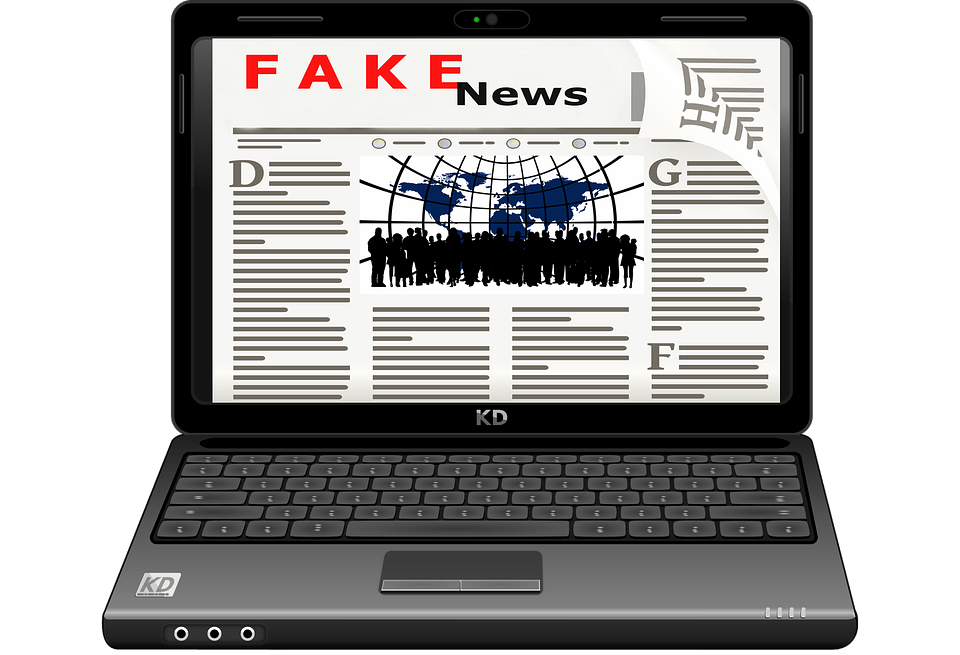By: Monique Cole
In 2016, NPR featured a study from Stanford University that assessed how well students can detect stories with accurate information. Participants ranged from middle school to college students looking at either photographs, news stories, various advertisements or social media posts. The studies found that students of all ages had a hard time identifying “fake” news or signs of media bias.
High school students also had a difficult time discerning between “fake” news and real news on Facebook. The study found that “more than 30 percent of students thought a fake Fox News account was more trustworthy than the real one.” At the college level, students still had a difficult time identifying political bias in social media posts.
The issue of what constitutes fake news is currently debated by news consumers and news critics. The new phenomenon of fake news has even made its way into NSU classrooms.
What is “fake” news?
“Fake news is really something that is almost satire,” said Barbara Besteni, adjunct professor in the Department of Writing and Communication. “The person who hurts is the one who truly believes it is true. And the media hurts.”
For example, the article “Donald Trump sent his own plane to transport 200 stranded marines” was published on americanmilitarynews.com and had ties with Sean Hannity, a well-known conservative commentator. According to an article from CNBC, while this article does mention that the story was confirmed by the Trump administration, The Washington Post’s investigation of the article found otherwise. The story racked up a total of around 893,000 views online.
While the internet is a source for gathering and sharing information, it is also a place for people to post anything they want without limitations.
Besteni said once something is posted, it is up for grabs for anyone to see, unless taken down. Trending topics tend to gain more attention and can become problematic when people falsely believe the topic or story is true. This often leads to a hit, like, share or retweet on sites like Facebook or Twitter, which result in the stories being spread.
“What happens when social media picks it up [is that] sometimes the real media will jump on it without checking the facts to make sure it’s legitimate news, and they will publish it and put it on their own social media sites,” said Besteni.
Understanding media bias
Fake news is tied to the concept of media bias. Media bias can occur when different media outlets frame a story in a certain light.
Stephen Andon, assistant professor in the Department of Writing and Communication, said, “For the most part [for] news organizations, the bigger bias they might have is for certain stories and the way those certain stories are told… For instance, media is much more likely to write about stories about things that are overly dramatic, or they are more likely to feature stories in which they personalize a big issue.”
The media isn’t the enemy
The Society of Professional Journalists’ Code of Ethics provides ethical guidelines for members of the media. According to spj.org, some of the ethics presented in the code are always report the truth, avoid conflicts of interest, minimize any chance of harm and always be accountable for work ethic.
Besteni said, “The media becomes a whipping post for a lot of things. Having worked in the media for close to 30 years, I could tell you a lot of the things that the media is accused of are simply not true. We, as journalists, try to be as fair and unbiased as possible, but we’re humans too.”
Andon also said that the media is not the villain, but the watchdog.
“They are supposed to be the fourth estate, which means that they are supposed to speak truth to power. They are supposed to help us make decisions as a society based on the information and analysis they provide to us. To say, ‘Oh, the media is so biased,’ is bogus. It’s a cop out,” said Andon.
Being a part of the solution
There are certain things people who consume the news can do to avoid believing fake news. For example, being able to identify signs of fake news or bias.
According to factcheck.org, some tips for identifying fake news include looking at the news source and author, being critical of supporting evidence and recognizing the date of publication. A more reliable news source is likely to come from a media outlet that is considered more reputable, credible or well-known. While these considerations may seem like common sense, more complex and difficult tasks include avoiding bias or going out of your way to hear both sides of the story.
“Before you share something, stop and think. Sometimes your gut will tell you if it’s too good to be true it probably is,” said Besteni.
She recommended the website snopes.com, which fact-checks various news sources.
Andon said, “We need people to know the first hit on Google is not the end-all be-all for information. You need to evaluate where the information is coming from, who they are citing, what are the biases… or what are the political connections for some of these media outlets.”


